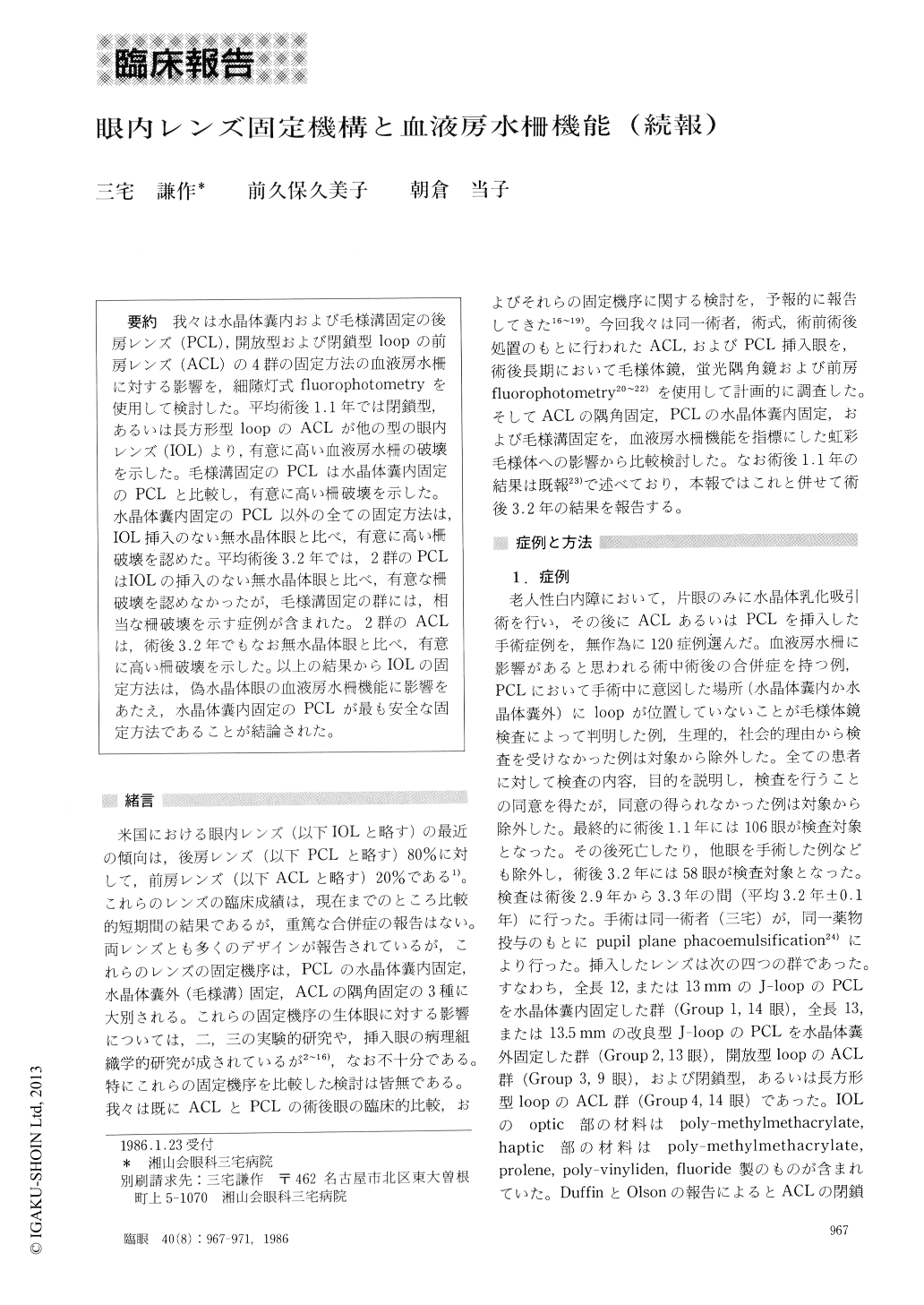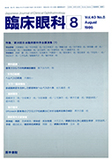Japanese
English
- 有料閲覧
- Abstract 文献概要
- 1ページ目 Look Inside
我々は水晶体嚢内および毛様溝固定の後房レンズ(PCL),開放型および閉鎖型loopの前房レンズ(ACL)の4群の固定方法の血液房水柵に対する影響を,細隙灯式fluorophotometryを使用して検討した.平均術後1.1年では閉鎖型,あるいは長方形型loopのACLが他の型の眼内レンズ(IOL)より,有意に高い血液房水柵の破壊を示した.毛様溝固定のPCLは水晶体嚢内固定のPCLと比較し,有意に高い柵破壊を示した.水晶体嚢内固定のPCL以外の全ての固定方法は,IOL挿入のない無水晶体眼と比べ,有意に高い柵破壊を認めた.平均術後3.2年では,2群のPCLはIOLの挿入のない無水晶体眼と比べ,有意な柵破壊を認めなかったが,毛様溝固定の群には,相当な柵破壊を示す症例が含まれた.2群のACLは,術後3.2年でもなお無水晶体眼と比べ,有意に高い柵破壊を示した.以上の結果からIOLの固定方法は,偽水晶体眼の血液房水柵機能に影響をあたえ,水晶体嚢内固定のPCLが最も安全な固定方法であることが結論された.
We evaluated the slitlampe fluorophotometric find-ings after implantation of intraocular lens. We used posterior chamber lenses with intracapsular fixation (14 eyes), with ciliary sulcus fixation (13 eyes), ante-rior chamber lenses with open flexible loops (9 eyes) and semi-flexible closed or rectangular loops (14 eyes).
Fluorophotometric evaluations after an average of 1. 1 year after surgery have shown that anterior chamber lenses with closed or rectangular loops resulted in a significantly higher dye concentration in the anterior chamber than other types of implants. A significantly higher dye concentration resulted after posterior cham-ber lens implantation with ciliary sulcus fixation thanthose with intracapsular fixation. When compared with aphakic eyes without IOLs, all implants resulted higher dye concentration except for posterior chamber lens with intracapsular fixation.
After an average of 3.2 years following surgery, no differences were observed in dye concentration among two types of posterior chamber lenses and aphakic eyes without IOL. Eyes with anterior chamber lenses showed significantly higher dye concentrations than the other groups.
The findings indicate than the type of IOL fixation may influence the integrity of blood-aqueous barrier in the pseudophakic eyes. Posterior chamber lens with intracapsular fixation excerted the least trauma in this aspect.
Rinsho Ganka (Jpn J Clin Ophthalmol) 40(8) : 967-971, 1986

Copyright © 1986, Igaku-Shoin Ltd. All rights reserved.


